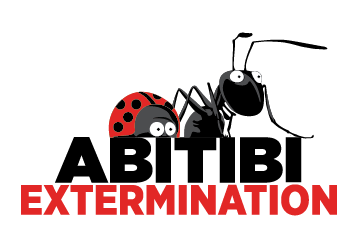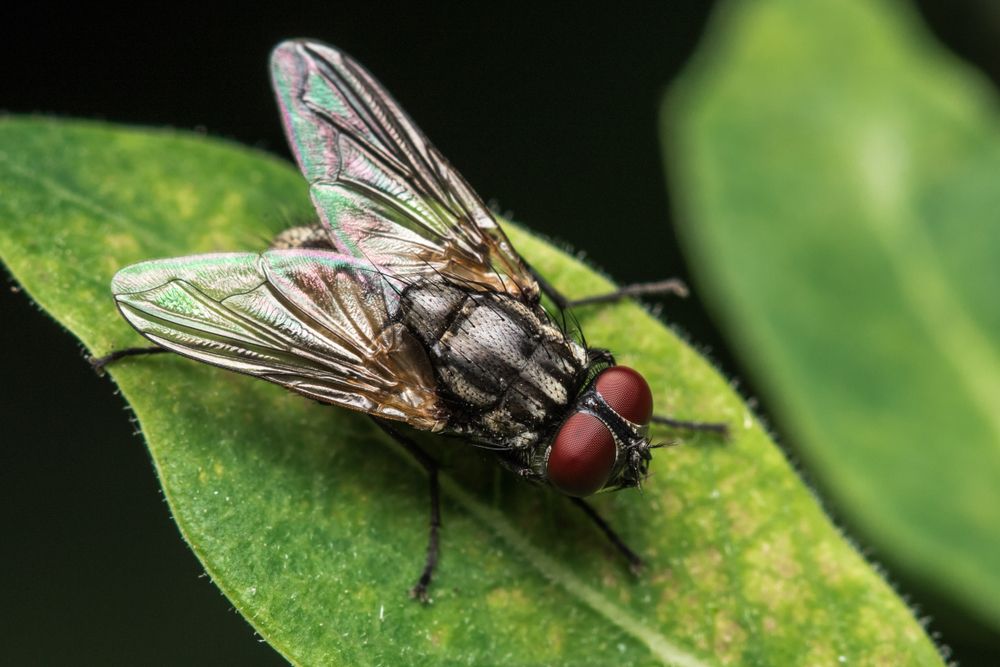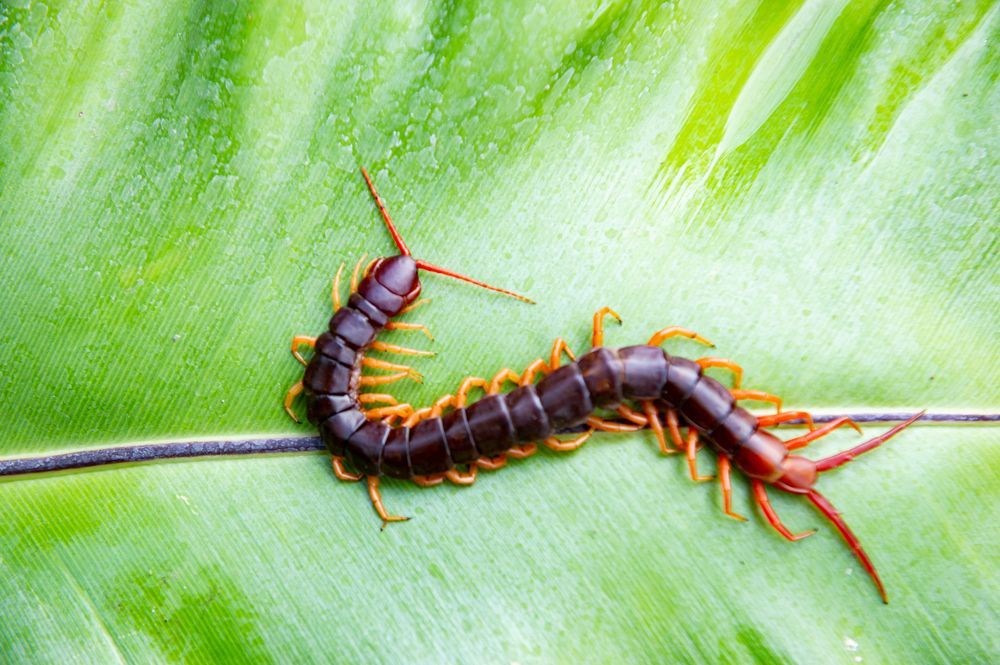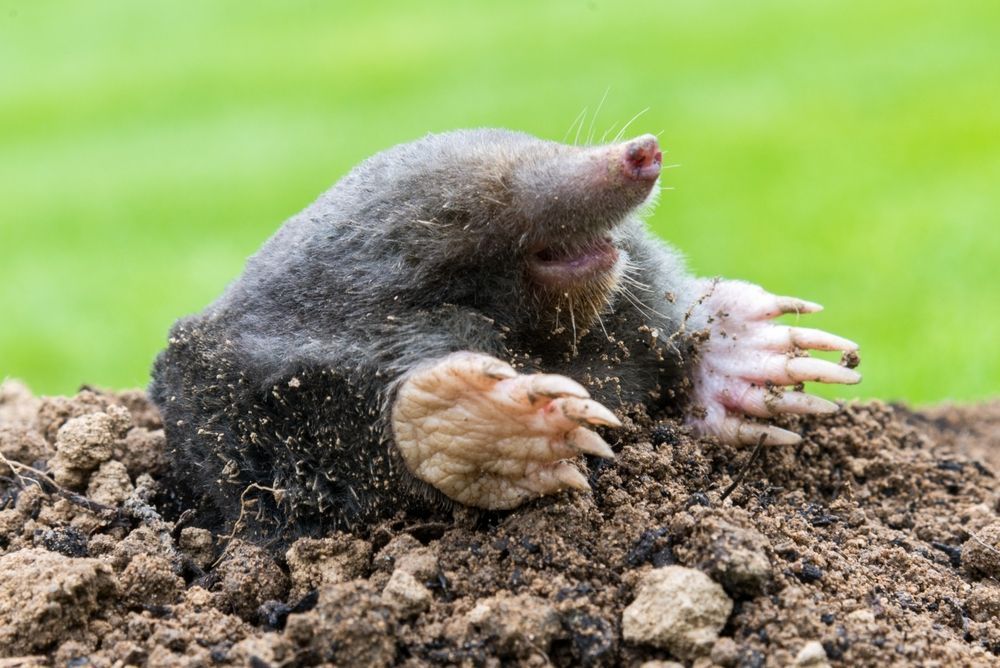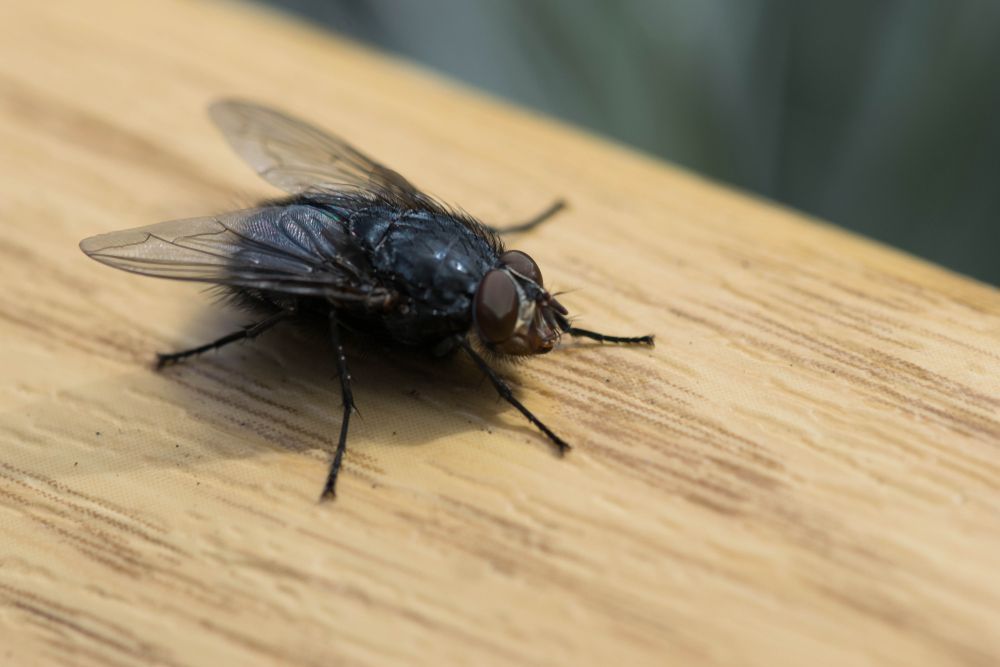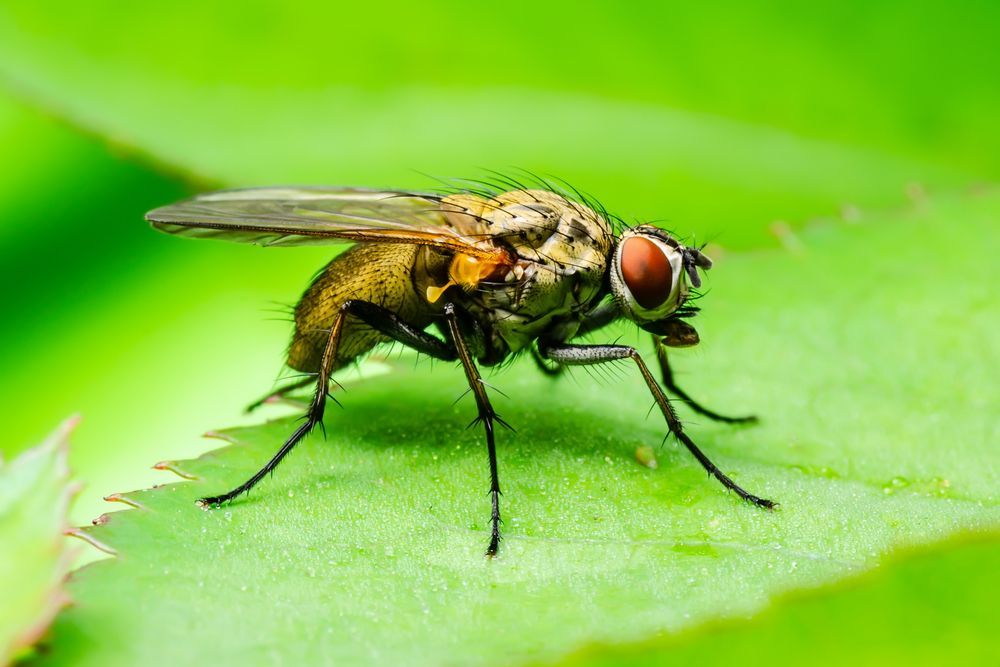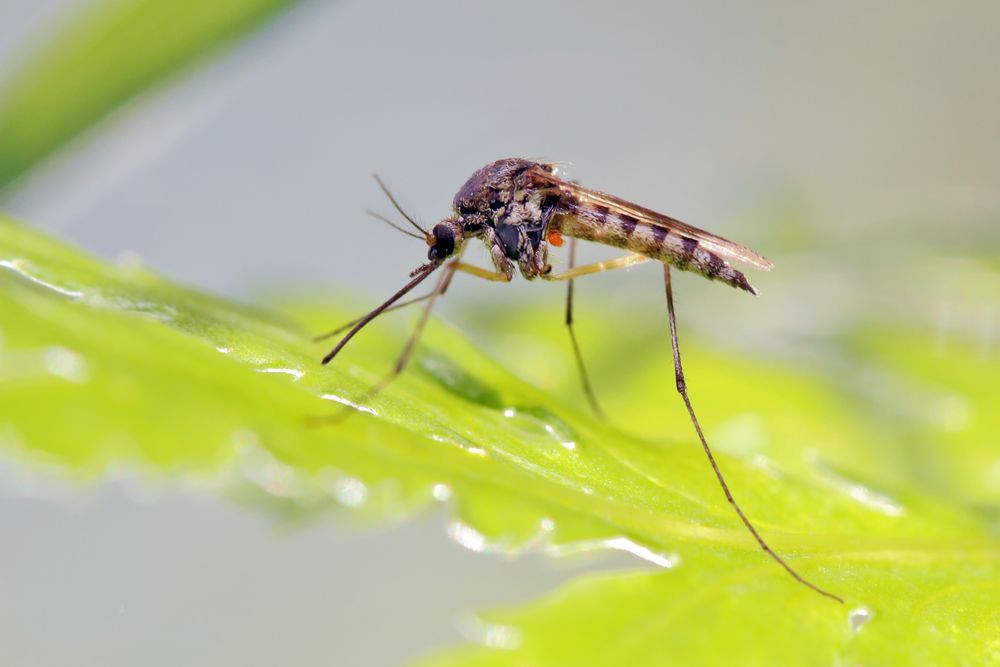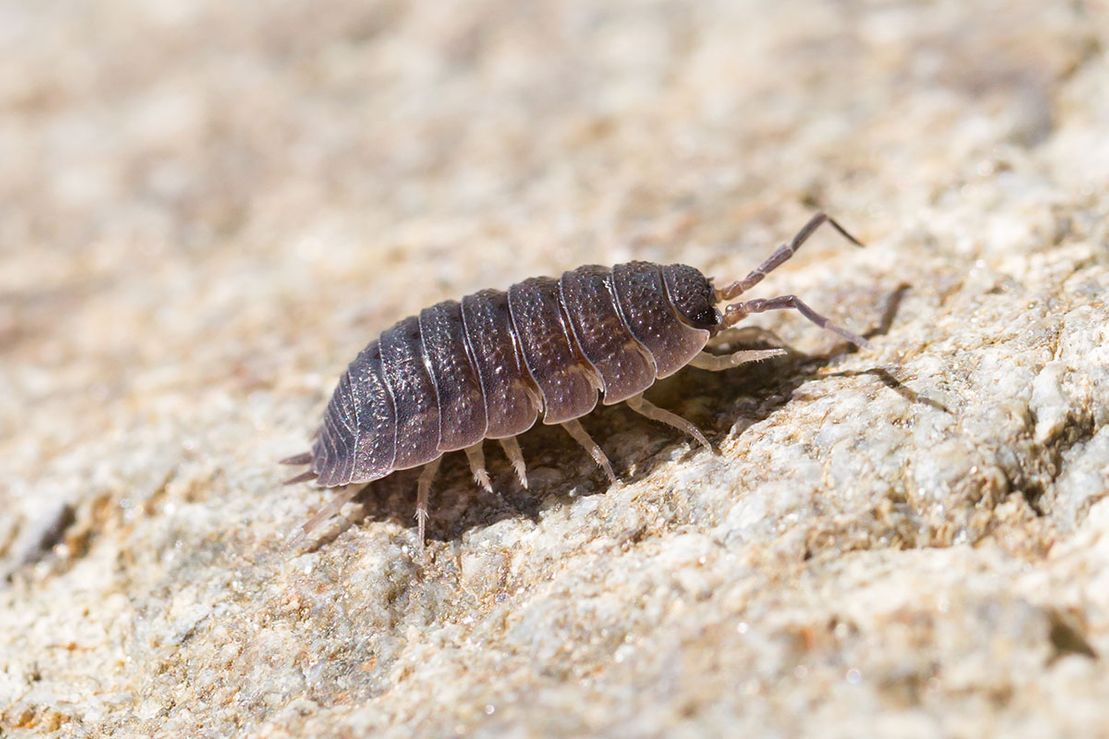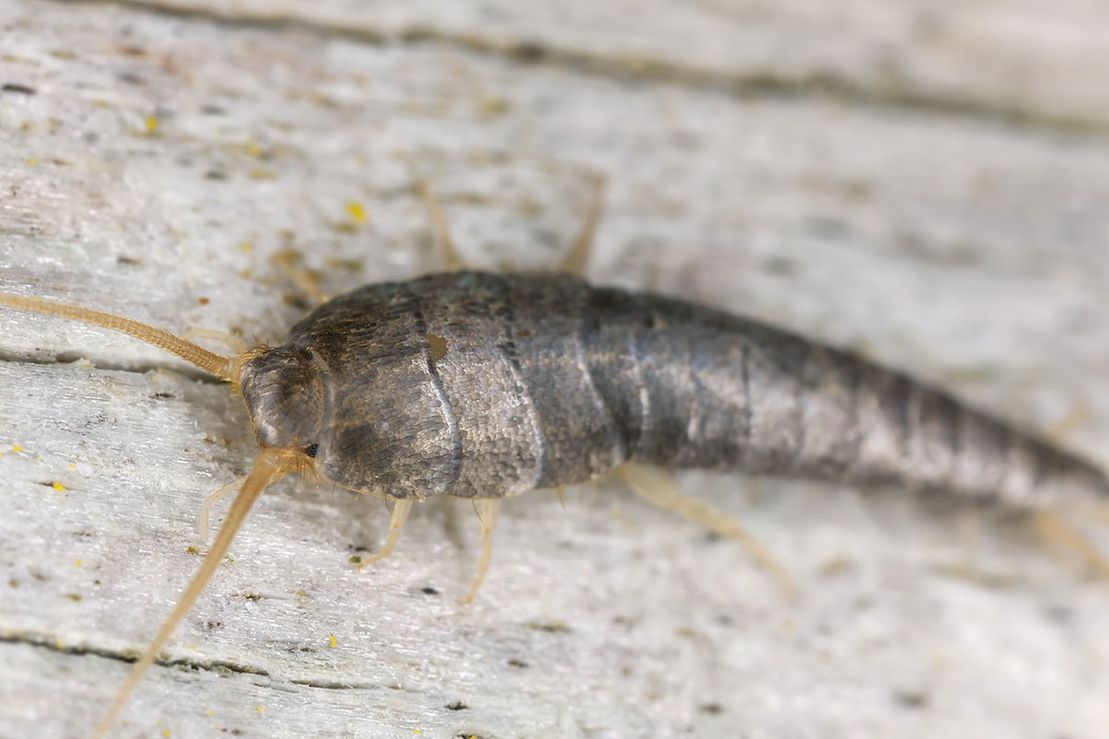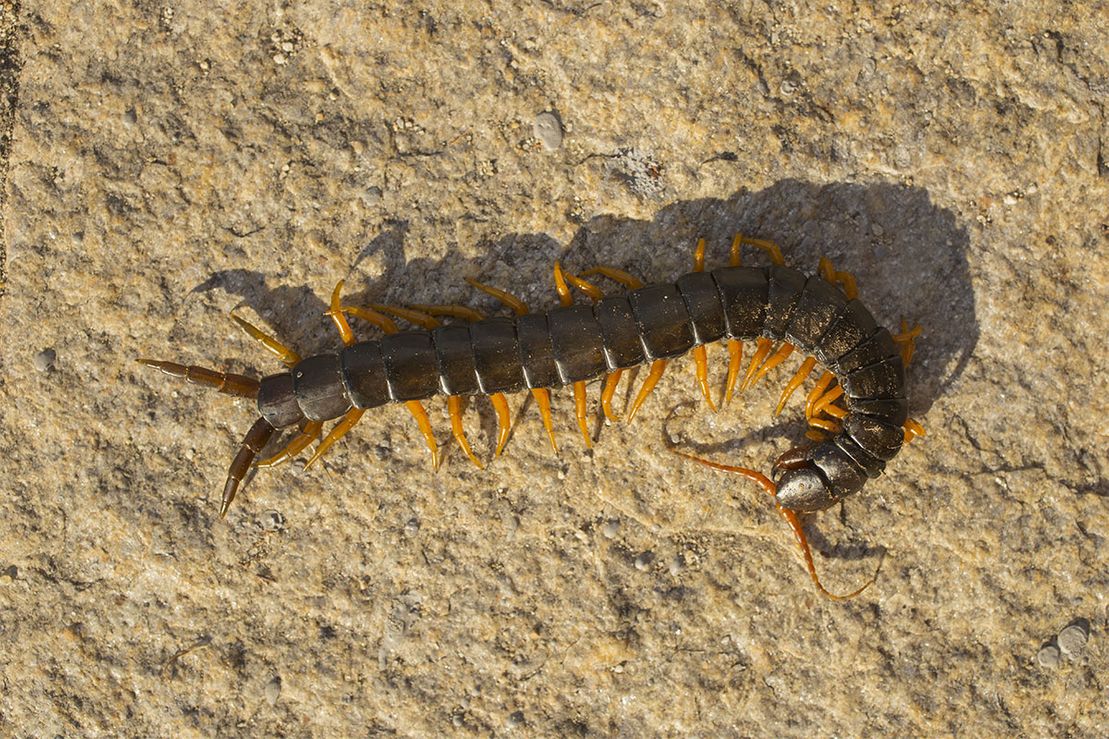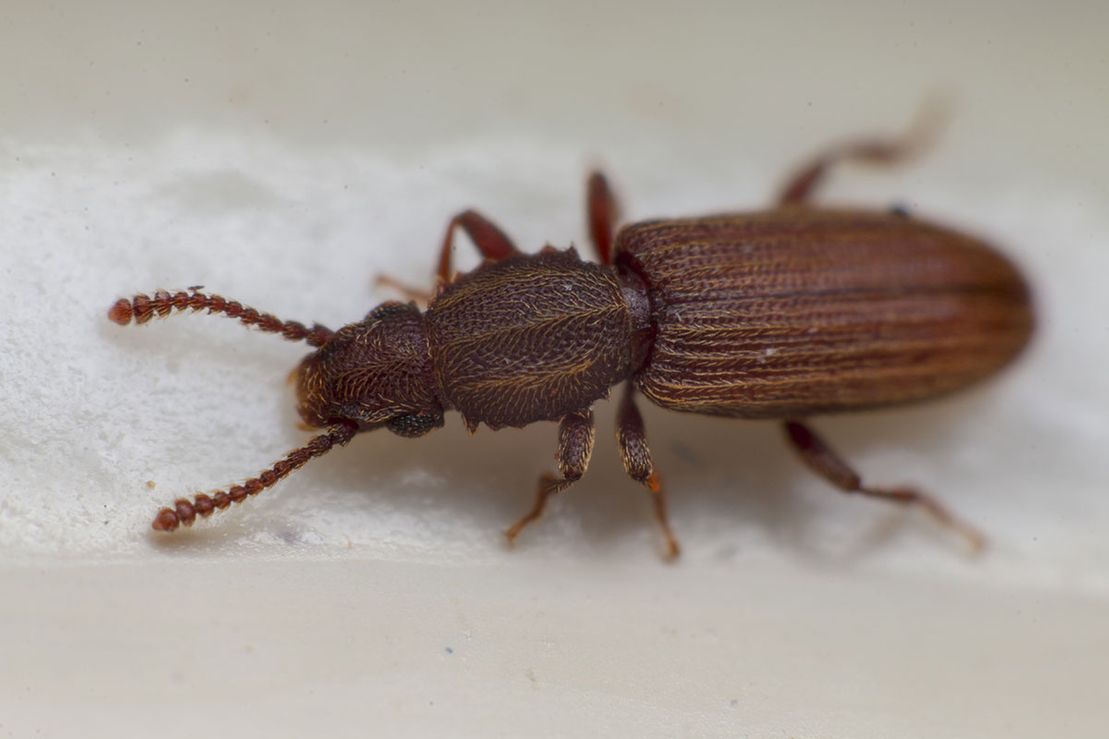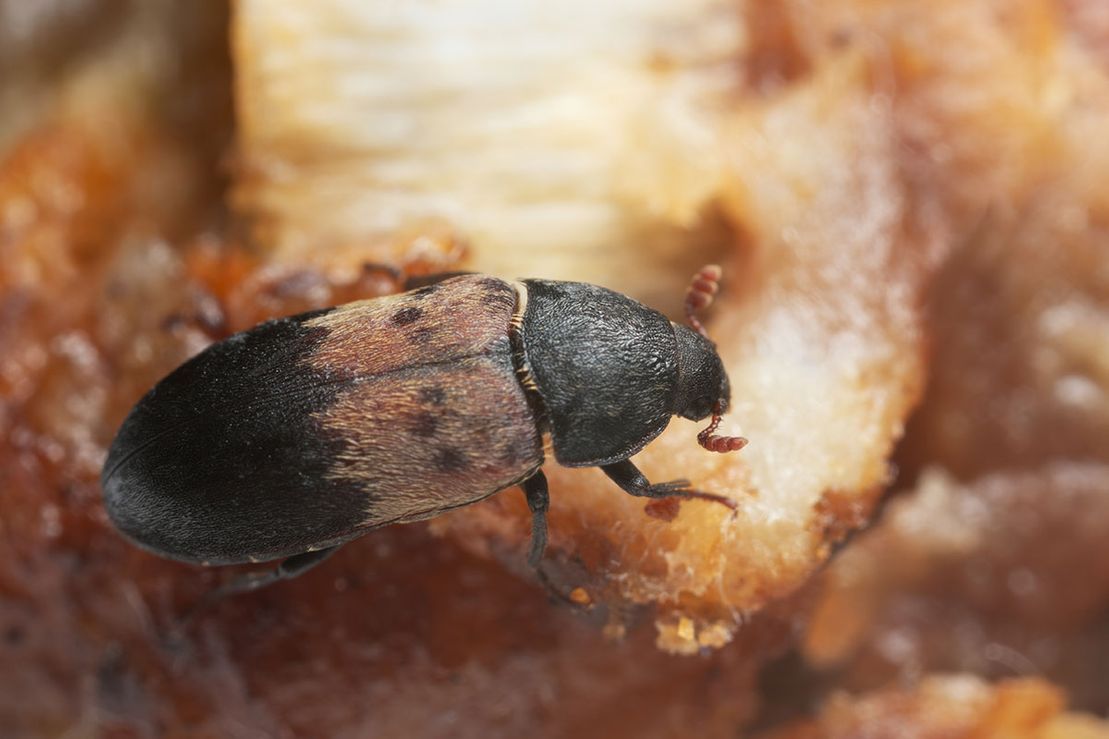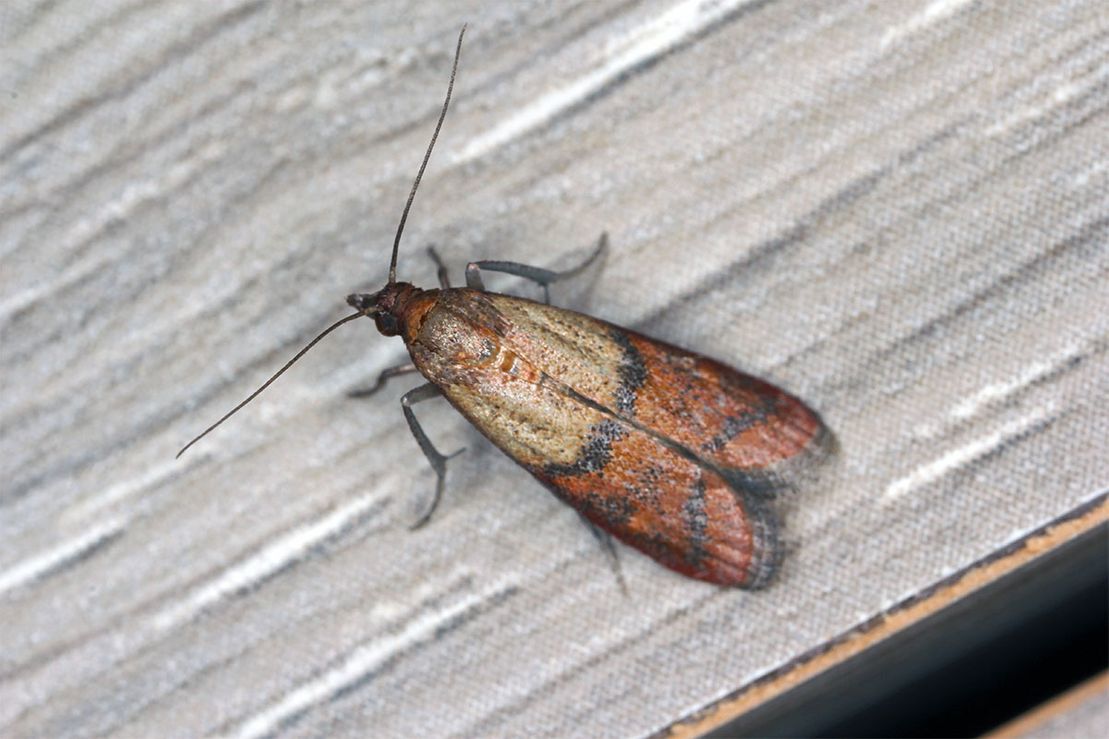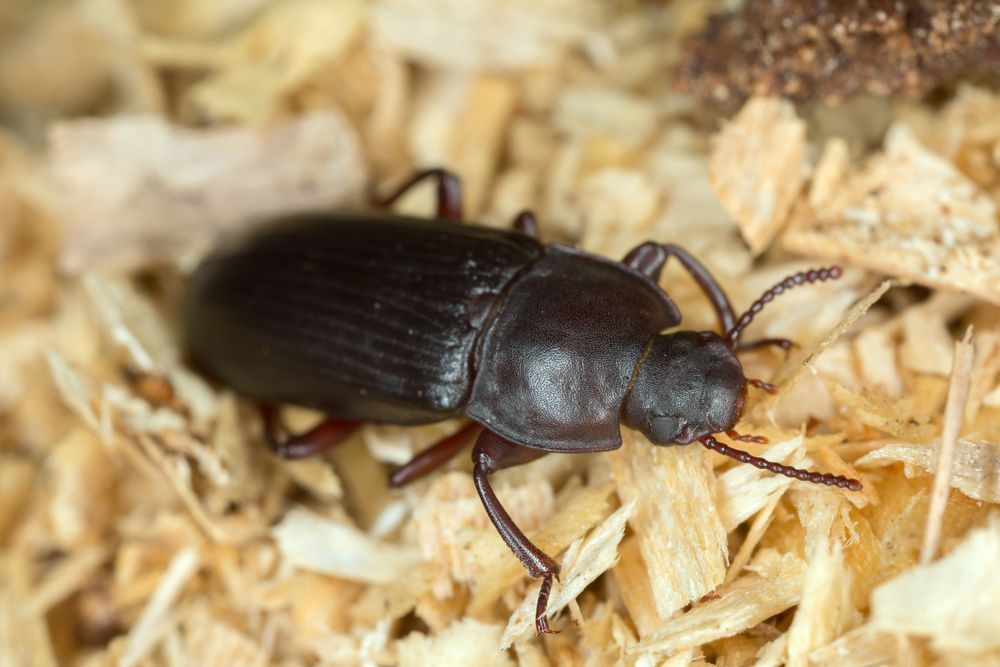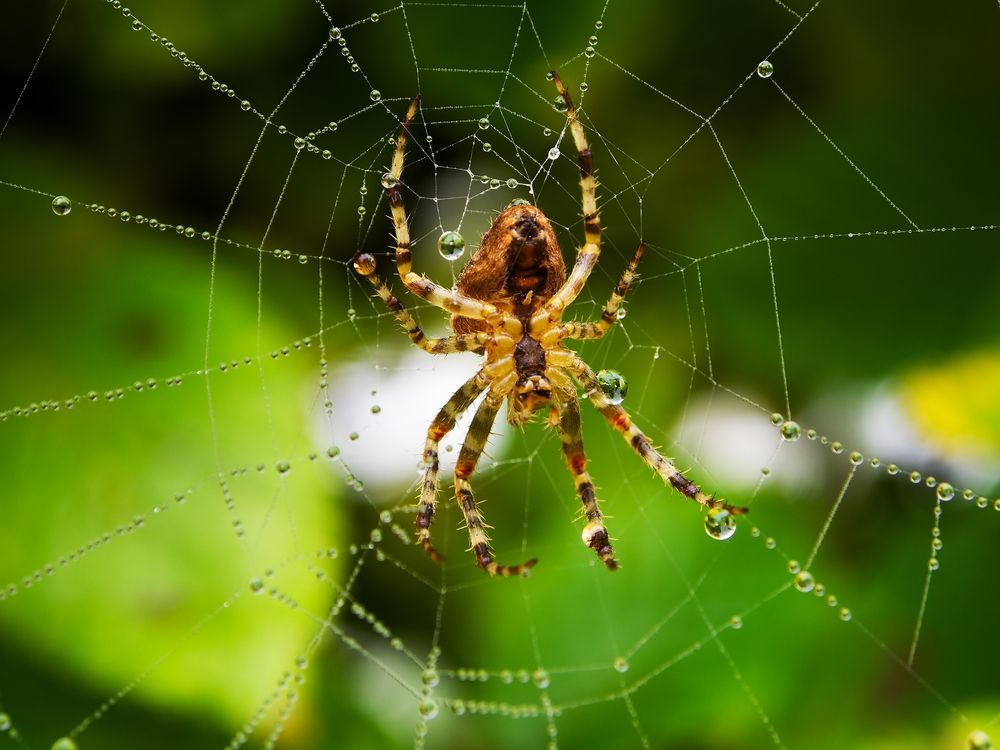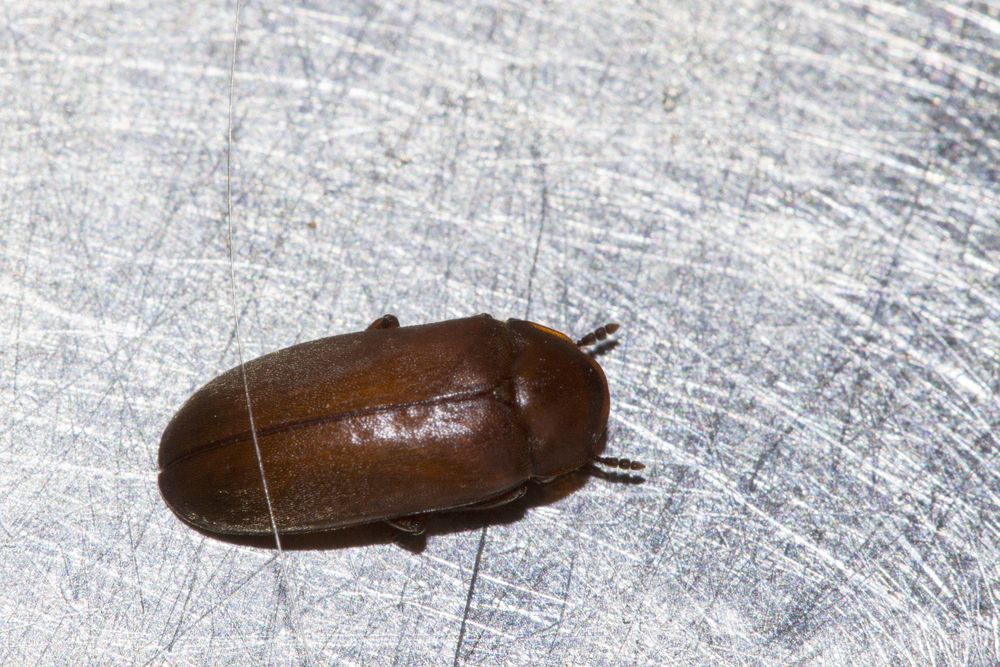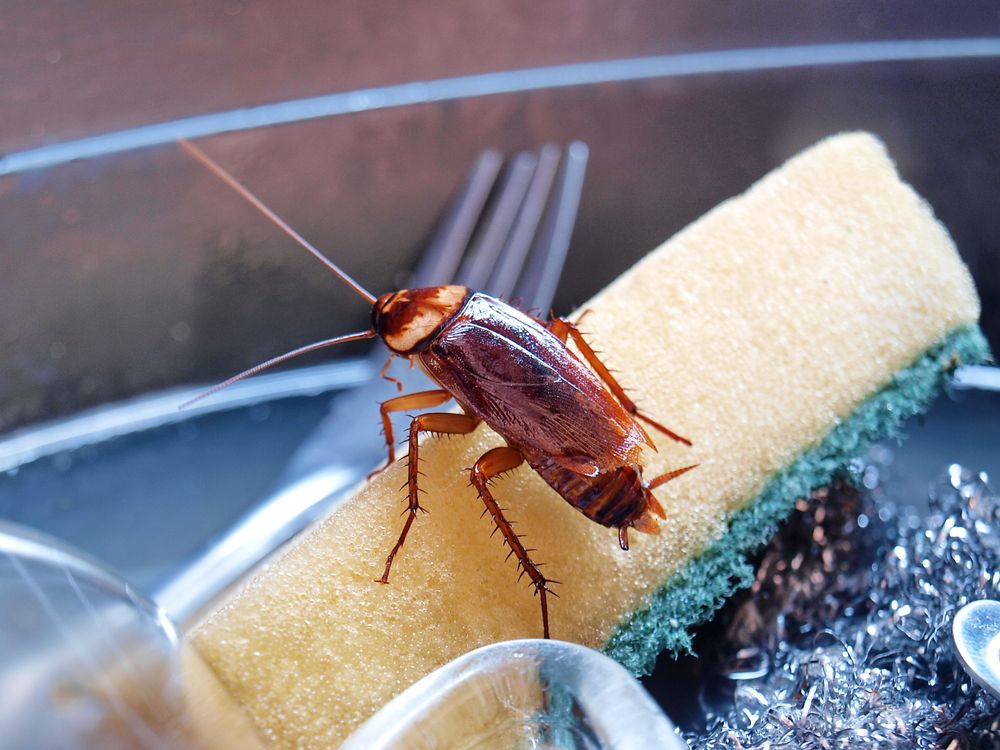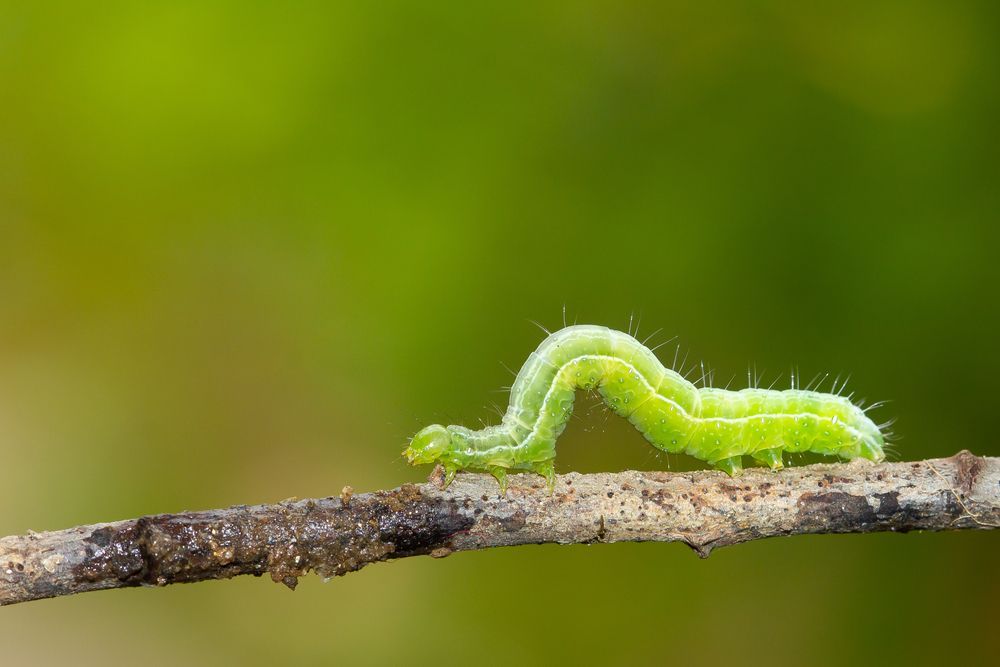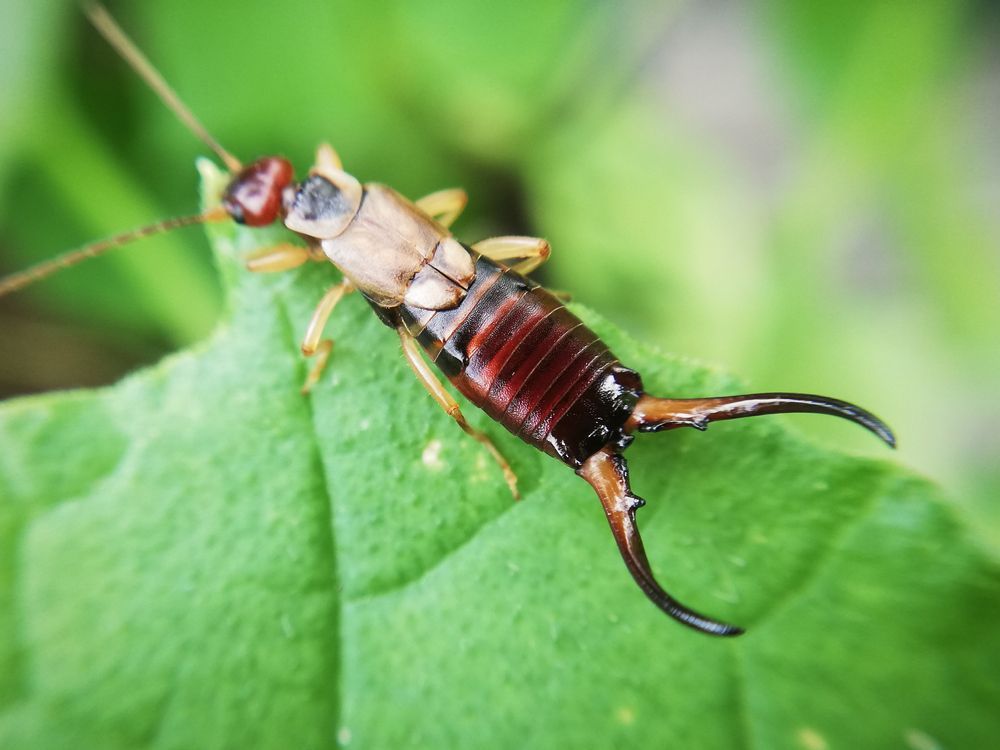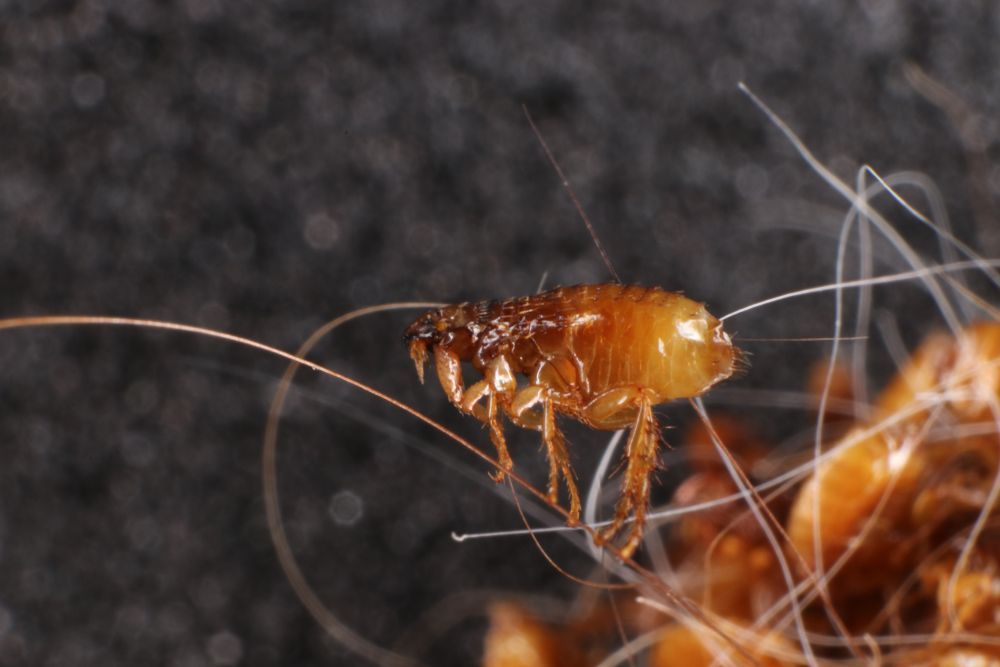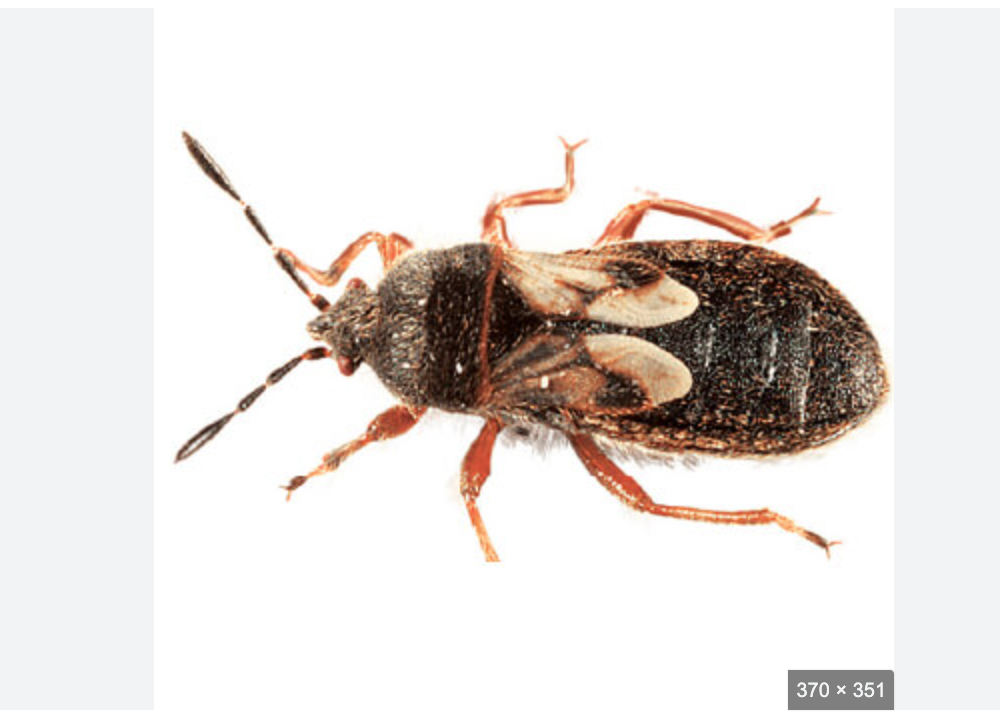Abitibi Extermination
Other Parasites
Wasps
Wasps are very common in Quebec. Although they are useful for pollinating plants, they can be dangerous to us, especially if we are allergic. They sting by injecting venom into the skin of their victim, which can prove to be quite painful.
Features
- 10 to 25 mm Long
- Colors: Black and Yellow
- Living in a Colony
Prevention and Treatment
- Seal Exterior Cracks and Fissures
- Apply Insecticide to Cracks
- Contact an Expert if the Invasion Is Significant
Indoor Flies
Flies are very common in both urban and rural areas. They can be problematic as they are known to transmit diseases. Typically, they arrive in late winter or early spring.
Features
- About 9 mm Long
- Lay Up to 500 Eggs
- Three Species: the Earthworm Fly, the Face Fly and the Blowfly
Prevention and Treatment
- Empty and Clean Garbage Cans Regularly
- Remove All Decaying Material
- Apply an Aerosol Insecticide
- Seal Doors and Windows
- Call a Professional if the Invasion Is Serious
Drosophila Flies
Drosophila flies do not bite. However, they do spread bacteria and disease as they move around. They are therefore a risk to your health since they can carry bacteria on your plates, glasses, and even toothbrushes.
Features
- 2.5 to 5 mm Long
- Color: Yellow-Brown
- Lay Between 25 and 35 Eggs per Day
- Attracted by Fruits and Vegetables
Prevention and Treatment
- Rinse Containers Before Recycling
- Monitor the Condition of Fruits and Vegetables
- Remove Perished Food
- Apply an Aerosol Insecticide
- Contact a Professional Exterminator
Mosquitoes
Mosquitoes are small, biting insects. They can carry disease and are a real nuisance. They usually thrive in stagnant or slow-moving water. If you are located near such areas, you may be facing an invasion.
Features
- Installing Mosquito Nets
- Eliminate Standing Water in Your Building
- Apply a Health Canada-Approved Product to Your Skin
- Apply an Insecticide Like a Fly Killer Indoors
- Contact a Professional for an Extermination
Common Sowbugs
Sowbugs are common in Canada. Although they do not pose a significant health problem, an invasion can quickly become difficult to manage.
Features
- 13 to 15 mm
- Oval Shape
- Color: Grayish
- Made Up of a Soft Carapace
- Seven Pairs of Legs and Two Pairs of Antennas
Prevention and Treatment
- Remove Organic Debris Such as Dead Leaves from the Curbstones
- Seal Doors and Windows
- Correct Water Infiltration
- Apply Insecticide Indoors and Outdoors
- Contact a Professional in the Event of a Major Infestation
Silverfish and Thermobia
Thermobia, silverfish and firebrats are found primarily in warm, hidden areas. An infestation may be due to mold or animal hair. These species can cause damage to wallpaper, book bindings, etc.
Features
- Silverfish
- Approximately 12.5 mm Long
- Covered with Silver Scales
- Two Long Thin Antennas
- Thermobia
- Approximately 12.5 mm Long
- Grey or Brown
- Mottled with Dark Markings and Lighter Spots
Prevention and Treatment
- Vacuum Regularly
- Keep All Surfaces Clean
- Repair Any Leaks or Moisture Problems
- Seal All Cracks
- Call an Exterminator if the Invasion Is Significant
Scolopendras and Millipedes
These two species are recognizable by their many segments and multiple legs. They are mainly found in damp areas such as basements and bathrooms.
Features
- Scolopendres
- Flattened Body
- Each Segment Has a Pair of Legs
- Rushing to a Hiding Place When Disturbed
- Milliipede
- Rounded Body
- Each Segment Has Two Pairs of Legs
- Moves Faster
- Curls in on Itself When Disturbed
Prevention and Treatment
- Remove Organic Debris
- Seal Doors and Windows
- Keep the Humidity Level as Low as Possible Indoors
- Correct Possible Infiltrations and Water Leaks
- Apply Insecticide Indoors and Outdoors
- Call a Professional Exterminator if the Infestation Is Serious
Grain Beetle
With its flattened body, this insect can get into any package of cereals and other foodstuffs. Infested purchased products are frequently the source of the invasion.
Features
- 2.5 to 3.5 mm Long
- Colors: Dark Brown or Reddish Brown
- Distinctive 11-Segment Antennas
Prevention and Treatment
- Store Food in Airtight Containers
- Vacuum Regularly
- Examine the Food You Buy
- Apply Insecticide Around the Kitchen and Pantry
- Contact an Exterminator in Case of a Major Infestation
Larder Beetle
Larder beetles are common in sites where animal protein is stored. This species can transmit infections or cause allergic reactions. Therefore, action should be taken as soon as it appears.
Features
- About 8 mm Long
- Colors: Dark Brown or Black
- Yellowish Band with 6 Dark Spots
Prevention and Treatment
- Seal Doors and Windows
- Vacuum Everywhere
- Apply Insecticide in the Attic and Where the Insect Was Found
- Store Food in Airtight Containers
- Fill Cracks
- Find the Nest
- Contact Professionals for a Quick and Efficient Extermination
Indian Meal Moth
This species of moth is considered the most troublesome in infestations of stored products. They attack all types of cereals, dried fruits, animal feed, etc. They can be seen flying in dark areas. The infested food is entangled with silk threads and sheaths containing the excrement of the larvae.
Features
- Color: Reddish Brown
- Body: About 10 mm Long
- Wings: About 16 mm Long
Prevention and Treatment
- Store Food in Airtight Containers
- Examine Pet Food Before Storing It
- Vacuum Regularly
- Discard Infested Food
- Apply Insecticide Around the Kitchen and Pantry
- Call an Exterminator in Case of a Serious Invasion
Brown Flour Beetle
These insects crawl or fly throughout the building. They are mainly present in flour and cereal products. They get in by chewing the packaging, which forms holes.
Features
- Color: Reddish Brown and Shiny
- Have Wings
- About 3 mm Long
- Flattened and Oval Body
Signs of Presence
- Unpleasant Food Smell
- Smelly Liquid
- Holes in the Packaging
Prevention and Treatment
- Store Food in Airtight Containers
- Vacuum Regularly
- Apply Insecticide Around the Kitchen and Pantry
- Contact a Professional Exterminator if the Infestation is Large
Spiders
Spiders feed mainly on insects, most of which are pests. They are therefore particularly useful for keeping pests away. They do not present any health risks. However, they can quickly become an ordeal, especially for people who are phobic.
Features
- 4 Pairs of Legs
- Body in Two Parts
- Wolf Spiders
- 3 cm Long
- Color: Dark Brown
- Cellar Spiders
- Resemble the Tipula Mosquito
- Very Long Legs
- House Spiders
- Colors: Dirty White or Black
- First Pair of Legs Almost 3 Times Longer than Their Body
- Black Widows
- Color: Black and Shiny
- Dolomites
- Up to 7.5 cm Wide
- Look like Wolf Spiders with Different Eyes
Prevention and Treatment
- Remove All Canvas
- Clean Behind Furniture and Appliances
- Use Pesticides Only When Really Necessary
- Wear Gloves When Working in the Garden, Garage or Basement
- Contact a Professional Exterminator if the Infestation Becomes Severe
Black Carpet Beetles
Black carpet beetles can cause damage to various items in your building. They feed mainly on animal or plant materials such as hair, cotton, fur, etc.
Features
- 3.3 to 5.5 mm Long
- Oval Shape Similar to a Shell
- Colors: Dark Brown or Black
Prevention and Treatment
- Vacuum Regularly and Air Out
- Brush Your Pets Regularly
- Seal Your Doors and Windows
- Install Mosquito Nets
- Fill Cracks
- Contact Our Company if the Infestation Is Serious
Cockroaches
The cockroach is a species that is frequently found in all types of buildings. They have wings, although they cannot fly. They can infest food, transmit diseases, and leave an unpleasant odor.
Features
- 1.3 to 1.6 cm Long
- Color: Brown
- Two Dark Stripes on the Front of the Thorax
Prevention and Treatment
- Fill Cracks
- Store Food in Airtight Containers
- Correct Moisture Sources
- Throw Away Old Cardboard and Newspapers
- Install Sticky Traps
- Contact Us as Soon as Possible if There Is an Infestation
Tent Caterpillars
Tent caterpillars are part of the caterpillar family. They are particularly dangerous for trees since they can inflict significant damage and cause all their foliage to fall. As such, it is important to take action right away.
Features
- Three Species: Forest Tent Caterpillar, American Tent Caterpillar and Northern Tent Caterpillar
- Forest Tent Caterpillars
- Feed on the Leaves of Deciduous Trees
- American Tent Caterpillar
- Hairy
- Black-Brown with a Light Band along the Back, Blue Spots and Yellow-Brown Lines on the Sides
- Northern Tent Caterpillars
- Reddish Brown Back with a Row of Blue Dots Interspersed with Orange Dots
Prevention and Treatment
- Keep Your Distance
- Contact a Professional Exterminator in Case of a Major Invasion
Earwigs
Earwigs are recognizable by their cerci, which look like two claws at the end of their abdomen. They are nocturnal insects that cause damage to gardens. They can get in anywhere.
Features
- 1,5 to 2 cm Long
- Elongated and Flattened Body Covered With a Hard and Shiny Carapace
- Colors: Brown and Red
Prevention and Treatment
- Seal Doors and Windows
- Maintain Your Garden Regularly
- Remove All Plant Debris
- Apply Insecticide Indoors and Outdoors
- Call an Exterminator if the Invasion Is Significant
Fleas
Fleas are small parasites that feed by sucking the blood of mammals and birds. They are a source of discomfort and irritation for animals and humans alike.
Features
- Less Than 5 mm Long
- Jumping Insect
- Color: Dark Brown
Prevention and Treatment
- Consult a Veterinarian for Your Pet
- Vacuum Everywhere
- Contact an Exterminator to Eliminate the Infestation
Cereal Bugs
Also known as the "hairy bug," this pest feeds on the sap of grass blades through mouth parts that allow it to bite and suckle. We notice the drought-like destruction that this bug can cause most prominently in the summer. The grass turns brown and dies if left unchecked.
Features
- 3.5 to 4 mm Long
- Color: Gray-Black
- White Spot on the Back
Prevention and Treatment
- Avoid Mowing the Lawn Too Short
- Regularly Water the Lawn During Summer
- Reduce Soil Compaction
- Call a Professional if the Infestation Is Significant
Mole
Moles are carnivores that prefer to feed on insects rather than plants. However, their underground tunnels can ruin your garden. In addition, their numbers usually indicate an entirely different insect infestation in the soil.
Prevention and Treatment
- Install Multi-Traps in Their Tunnels
- Check for Insect Infestation
- Call a Professional to Intervene
White Worms
These worms feed primarily on roots, causing damage to your plants or lawn. If the lawn is wilting and turning brown, it is often a sign of an infestation.
Features
- Colors: White or Yellowish
- 2 to 4 cm Long
- C-Shaped Body, Fleshy and Wrinkled
- Light Brown or Brown Head
Prevention and Treatment
- Apply an Insecticide to the Soil
- Contact a Qualified Professional
